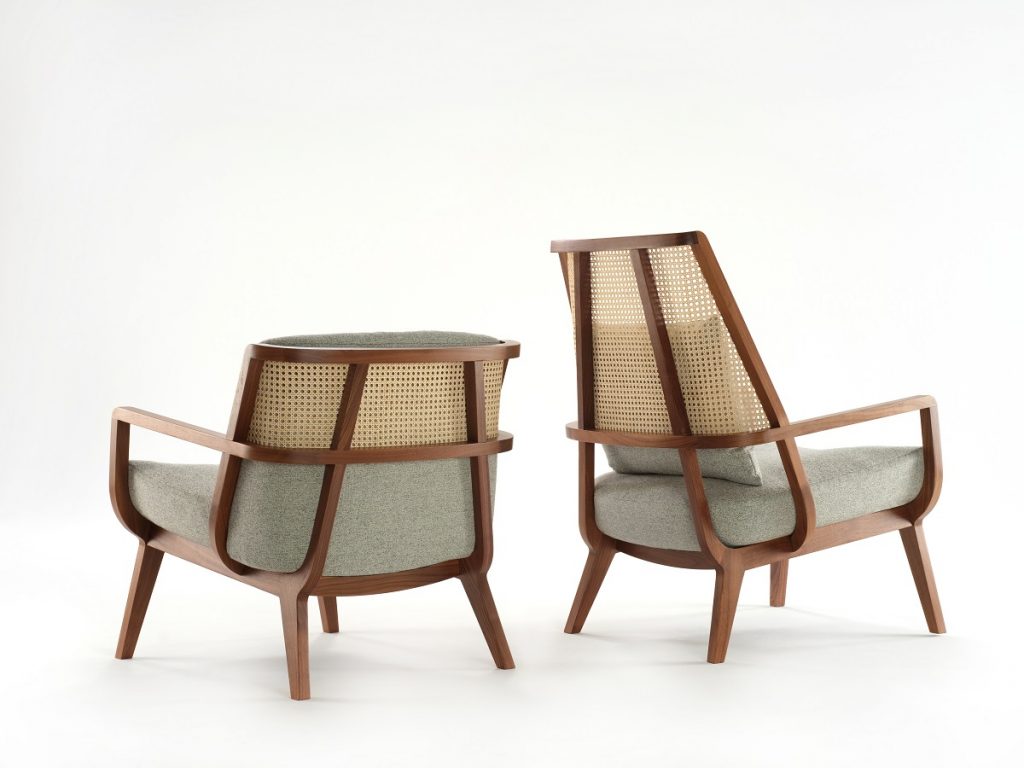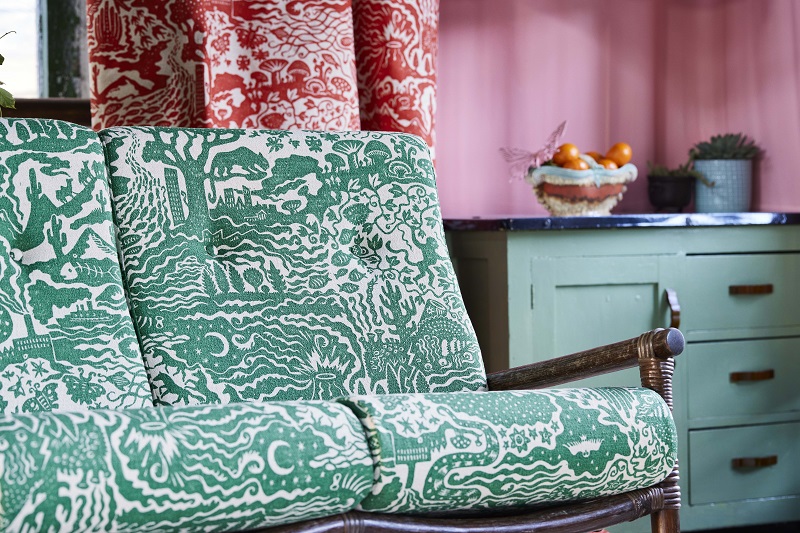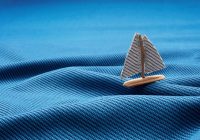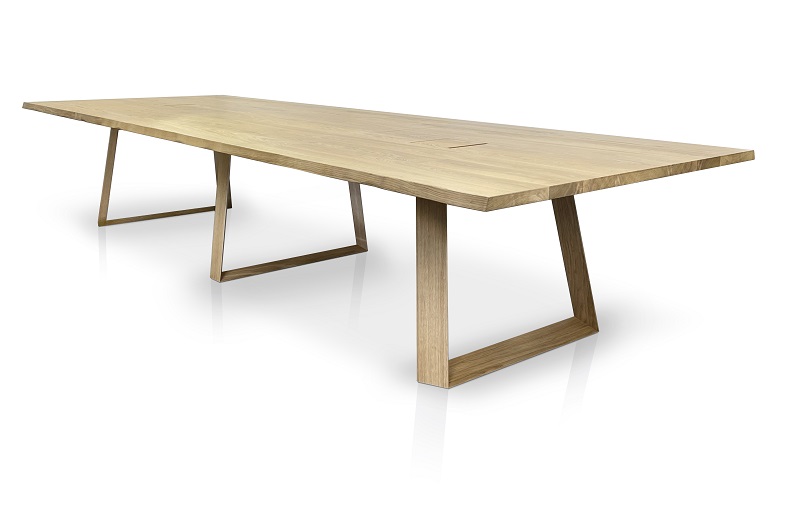
2021 Design Guild Mark award winner Aspect was inspired by Japanese culture.
Designed by Tom Rawlings for manufacturer William Hands, the collection embodies the design and manufacturing philosophy of the company – sustainable natural materials, architectural aesthetic qualities, considered proportions, clearly defined linear forms and beautifully refined signature details.
We caught up with Tom to find out more about the design process he undertook.
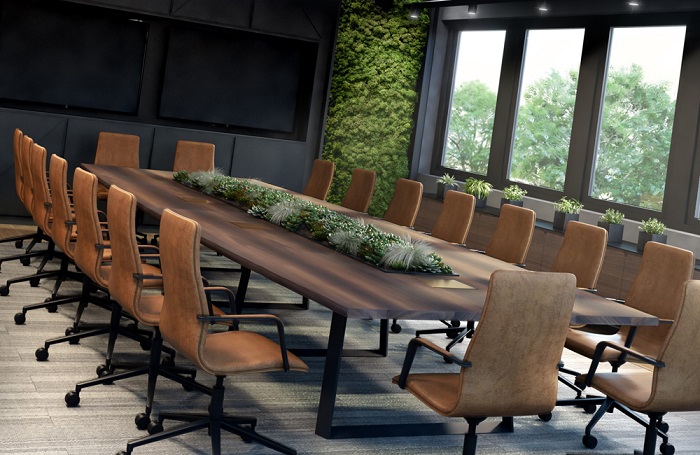
What initially inspired you to design Aspect?
William Hands wanted to develop a new table range drawing on the appeal of timber. I set about working on a piece of furniture that people could gather round to feel inspired, feel closer to wood and a sense of nature. At the time I felt inspired by Japanese culture such as temple architecture and joinery, origami and refined geometric lines. I wanted the design to offer versatility in terms of size aesthetic style / finish options to be able to suit a broad set of tastes.
Explain its concept.
A parametric system to support table tops of various sizes and overhangs. A deliberately slender yet rigid base design, playfully appearing like engineered timber in the sense that the section dimensions taper to a very fine point giving the illusion of being incredibly lightweight.
A table top option for a ‘live’ waney edge style, emulates planked wood, creating a tactile undulating edge profile with end grain detail at the ends of table This mimics real wood yet uses far less solid timber to be more sustainable.
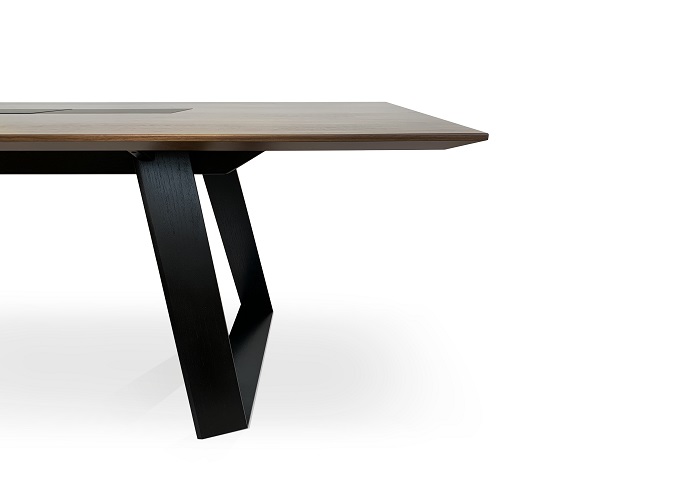
How have you struck the balance between function and design with this product?
Function has dictated everything regarding the sizes and proportions of the table base components, so as to give full support yet allow generous overhangs to minimise chairs / legs clashing with table bases. By anchoring the design around these parameters, many of the style cues were already defined.
Who does this design appeal to?
It is designed with the workplace in mind, but also an ambition that it could be adopted into domestic scenarios too. Its dynamic styling is intended to appeal to customers who would like something striking as a focal point to the room. In workplace environments the table can be used as an antidote to a rigid, corporate style for any size meeting room and workbench / hot desking scenario. The largest table made so far has been 7m long.
How long did the design process take, from initial sketches to roll out?
Approximately six months in total, from development sketches and CAD models, through prototyping and into production design detailing. I’m pleased to say that the concept ‘worked’ straight away and needed very little development to final production.
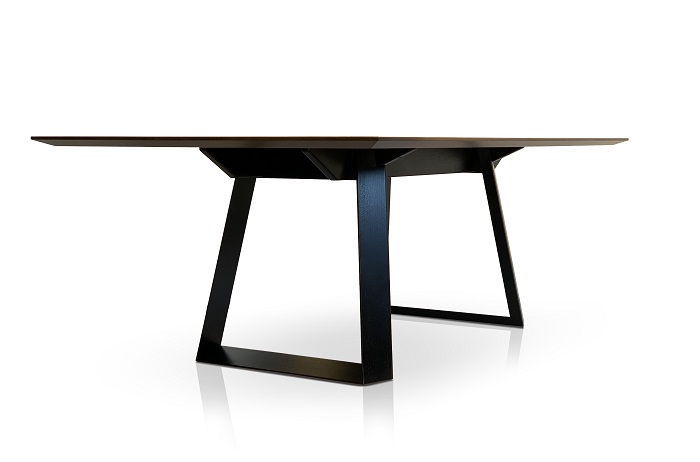
What modifications did you make along the way?
To reduce labour and material cost, the support rails were changed from solid timber to veneered plywood, with a stained ply edge. Making the rails of timber also presented material and cost limitations and now the overall effect is a stronger, more consistent frame.
In what way do you think this design is different from anything else available on the market?
Solid timber base tables tend to be very chunky and clumsy affairs, the Aspect base is intentionally slender and stylish. The underframe and support rails are discreetly inset from table edges. The design of the table base system and top construction allows all for very large table tops, of multiple sections, to be created. It offers a large degree of versatility to create any size of table.
What was the most challenging aspect of the design?
Developing the waney edge lipping detail to allow the optimum use of timber within technical limitations of the materials to prevent shrinkage, cracking etc.
The table base and rail design was relatively straight forward, working within economical timber billet sizes which would offer strength. In production we have developed simple processes to ensure precise and consistent levels of quality (and finishing) in an efficient manner, to create a better product.
For more information, go to williamhands.com/



